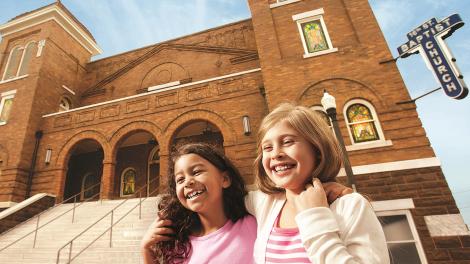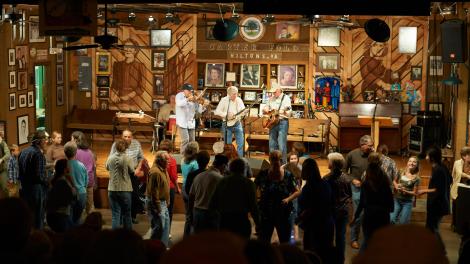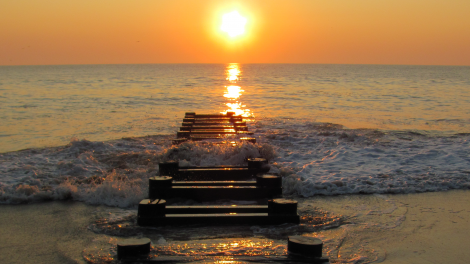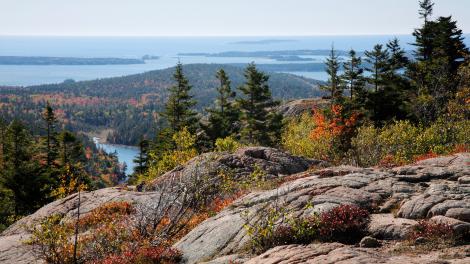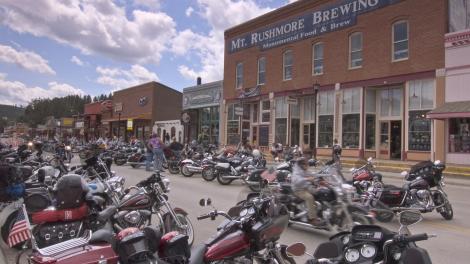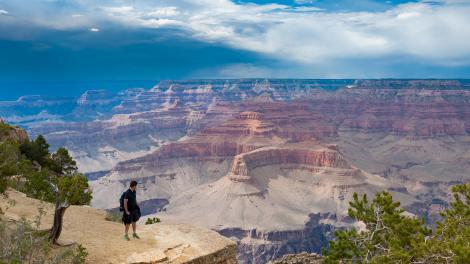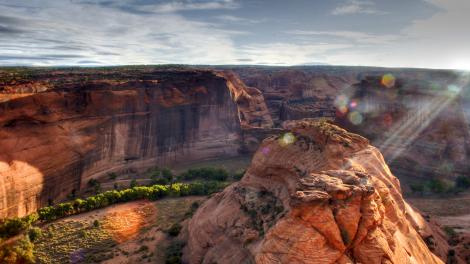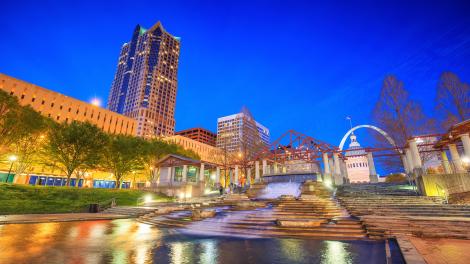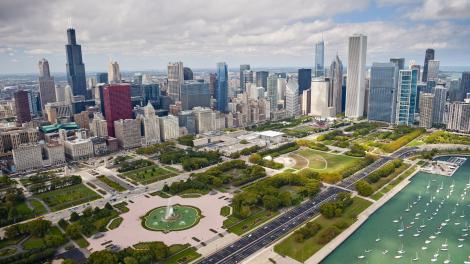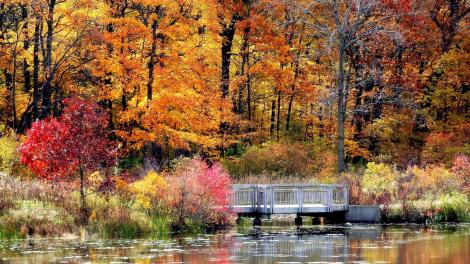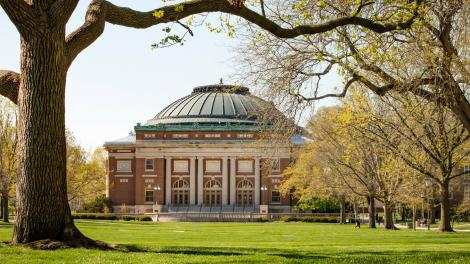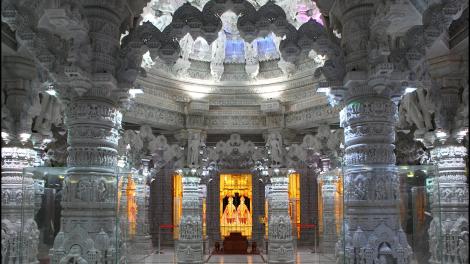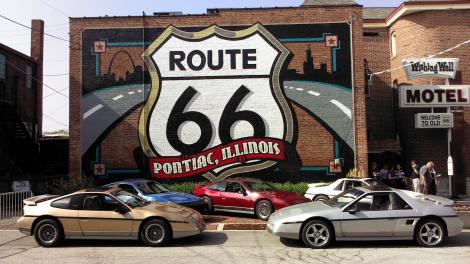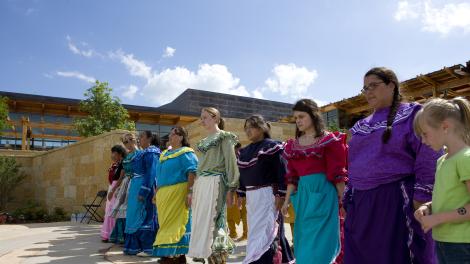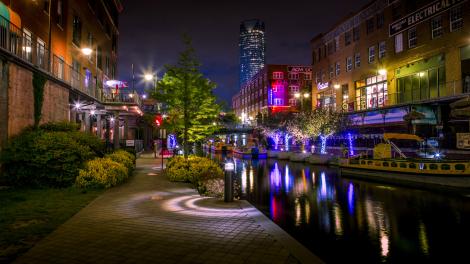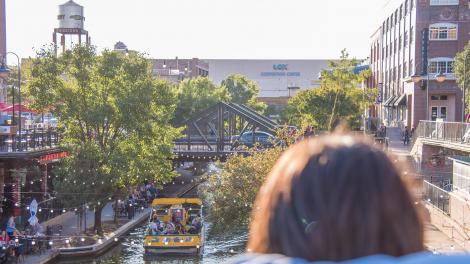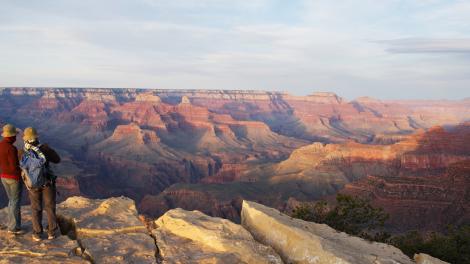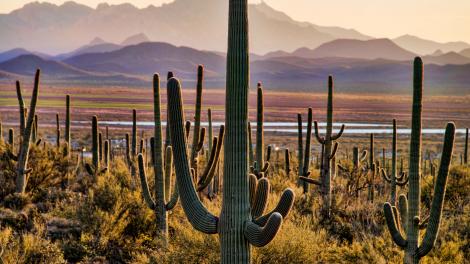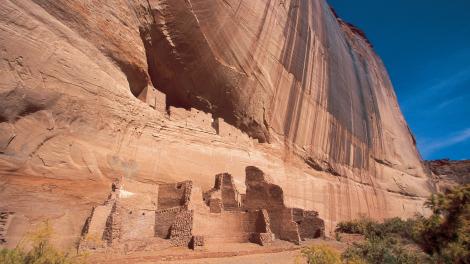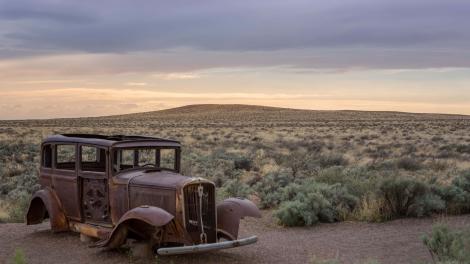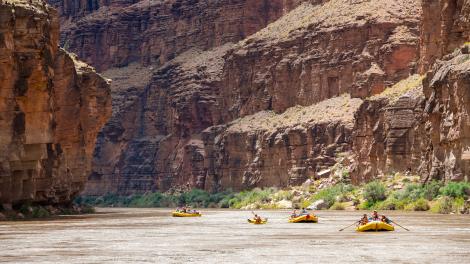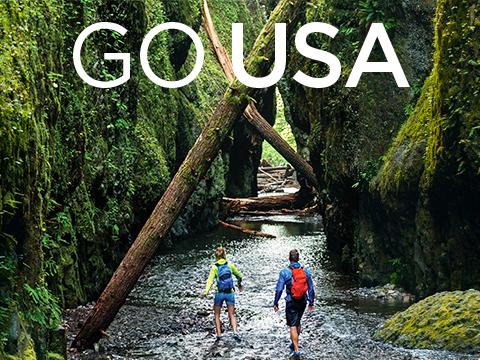- 州 :
- 新墨西哥州
- 亞利桑那州
- 奧克拉荷馬州
- 阿拉斯加州
- 蒙大拿州
- 伊利諾州
美國各地持續致力保存和分享北美洲美國原住民往往帶有悲劇色彩的傳奇歷史。
美洲的原住民文化擁有數千年蓬勃發展的歷史。藉由觀賞展覽、造訪重現歷史的博物館、參加活動、探索古蹟,以及與美國原住民對話,遊客將有機會瞭解這個族群。以下是五個在美國體驗美洲原住民文化的首要場所和盛會。
美國原住民國家博物館
美國第一個專門為美國原住民遺產所設的國家博物館是美國原住民國家博物館 (National Museum of the American Indian,NMAI),著重展現橫跨 12,000 年歷史的 1,200 多種原住民文化。該館擁有全球最豐富的美國印地安藝術、文物、攝影和媒體檔案館藏。常設展深入呈現原住民的宗教和儀式,以及當代原住民社群的身分認同掙扎。坐落在華盛頓特區國家廣場 (National Mall) 的 NMAI 是一棟曲線優美的石灰岩建築,以岩石地形做為設計概念,定期舉辦文化節、音樂會和座談。遊客可在博物館的米特斯坦原住民美食餐廳 (Mitsitam Native Foods Café) 品嘗美國各地原住民料理和當代料理,諸如玉米餅和水牛漢堡。
Outside look of the stunning National Museum of the American Indian

切羅基傳統文物中心
奧克拉荷馬州塔勒闊
占地 18 公頃的切羅基傳統文物中心 (Cherokee Heritage Center)坐落在奧克拉荷馬州的奧沙克山 (Ozark Mountains) 山腳,專門保存切羅基部落的文化和文物。漫步在迪利瓦 (Diligwa) 這個重現 1710 年切羅基村莊生活的活歷史展區,遊客可以看到工藝品製作的示範、參加說書活動,並體驗 18 世紀初的日常生活。接著造訪本中心 19 世紀晚期具代表性的切羅基鄉間村莊 – 亞當斯角落 (Adams Cornor)。也別錯過「血淚之路」(Trail of Tears),這個展覽詳細展示 1830 年代的切羅基人如何被迫從先祖的土地移居到今日的奧克拉荷馬州。本中心除了提供文化課程、推廣陶器和籃筐等傳統切羅基藝術外,也舉辦以傳統和當代切羅基作品為特色的年度藝術展。
Colorfully dressed Cherokee dancer during a performance at a cultural festival in Oklahoma

原住民部落慶典
新墨西哥州阿布奎基
新墨西哥州阿布奎基的原住民部落慶典 (Gathering of Nations) 號稱北美洲最大的印地安歡慶會,每年都會吸引數千名代表數百個部落的原住民共襄盛舉。這場多日盛會的慶祝活動旨在歌頌和推廣美國原住民的文化遺產。亮點包括傳統歌謠、舞蹈和擊鼓比賽,由 3,000 多名代表 500 多個北美洲部落的表演者精彩演出。與會者還能購買 800 多名美國原住民工匠的畫作、珠寶和陶器,飽嚐炸麵包這道傳統美食,享受將速發麵包蘸上蜂蜜或塔可醬的風味。
Attendees at the Gathering of Nations, the largest powwow in North America

陶斯普韋布洛
新墨西哥州陶斯
造訪陶斯普韋布洛 (Taos Pueblo),瞭解古老的普韋布洛 (Pueblo) 生活、文化和歷史,此處是陶斯部落連續定居 1,000 多年的家園。這個聯合國教科文組織欽定的世界文化遺產背倚基督聖血山脈 (Sangre de Cristo Mountains),中央是聖傑洛尼莫 (San Geronimo) 禮拜堂以及兩棟由泥土和稻草蓋成的典型普韋布洛風大型多層建築。現今仍有將近 1500 人以普韋布洛爲家,遊客則能參加導覽行程,瞭解本村的文化、歷史和人文。
Traditional pueblo village in Taos

賀德博物館
亞利桑那州鳳凰城
亞利桑那州鳳凰城的賀德博物館 (Heard Museum) 展示古老文物和當代藝術,致力保存美國西南部原住民的文化和遺產。大約 44,000 件的藏品中包括納瓦霍族織品 (Navajo Textiles)、祖尼族珠寶 (Zuni Jewelry) 和當代印第安藝術。值得一提的展覽還包括前美國參議員貝利·高華德 (Barry Goldwater) 收購的印地安霍皮族祖靈 (kachina) 娃娃,數量超過 430 件。除了免費導覽,也別忘了查看行事曆,參加教育課程或本館的年度藝術博覽會 – 印地安博覽會和市集 (Indian Fair and Market)。
Displays of colorful textiles and pottery inside the historic Heard Museum

Alaska Native Heritage Center
Anchorage, Alaska
Alaska is home to over 200 unique Alaska Native tribes, all with their own culture and traditions, and all are honored at the Alaska Native Heritage Center. Just outside downtown Anchorage, the Heritage Center sits on 11 hectares of wooded land. It consists of the Heritage Center with an indoor theater, outdoor theater referred to as the Talking Circle and life-sized recreated dwellings of six of the Alaska Native cultures. The center offers educational programs, dance performances, monthly speakers and guided tours of the museum.
Ceremonial performance at the Alaska Native Heritage Center

Blackfeet Indian Reservation
Montana
The stunning scenery of western Montana provides the backdrop for one of the 10 largest tribes in the USA, the Blackfeet Reservation. Home to more than 16,500 members, the Blackfeet Nation honors its long history in the region with museums and festivals. In Browning, the Museum of the Plains Indian houses exhibits highlighting the colorful culture of the ancient people of this land. Visitors can see historic clothing, weapons and toys from the Blackfeet, Crow, Sioux and Chippewa tribes to name a few. For four days in July every year, the museum hosts North American Indian Days, one of the largest gatherings of Indigenous American tribes, celebrating authentic Blackfeet traditions such as dancing, horse relays and games.
Blackfeet dancers dressed up in authentic tribal attire in the Montana wilderness

Cahokia Mounds State Historic Site
Collinsville, Illinois
The site is located 15 kilometers northeast of downtown St. Louis, Missouri, and was once the location of a thriving city of 20,000 Indigenous residents, peaking during the 11th and 12th centuries. Though the civilization is gone, it left behind remnants of the past, most notably 80 humanmade mounds. The area is one of the most complex archaeological sites in the world, with new excavations producing insight to how its inhabitants lived. The onsite Interpretive Center educates through videos, exhibits and presentations telling the rich history of this UNESCO World Heritage Site. Travelers can climb to the top of most of the mounds for a bird’s-eye view of the surrounding lands.
View of St. Louis, Missouri, from atop one of the ancient mounds at Cahokia Mounds State Historic Site



